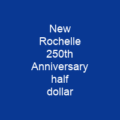The Cincinnati Musical Center Half Dollar: A Commemorative Coin with a Rich History
Imagine stepping into the world of numismatics, where every coin tells a story. The Cincinnati Musical Center half dollar, struck in 1936, is one such coin that carries within it the echoes of history and the intrigue of market manipulation. This commemorative piece was minted to celebrate Cincinnati’s fiftieth anniversary as a center for music, but its journey has been anything but straightforward.
The Birth of an Idea
Thomas G. Melish, a coin enthusiast with a vision, conceived the idea behind this half dollar. He controlled the group that bought the entire issue from the government and resold it at high prices, making him both the creator and the beneficiary of his own creation. Congress approved legislation for the coin on March 31, 1936, authorizing 15,000 pieces to be struck. But the road to approval was not smooth.
Design Revisions and Approval
The designs were initially rejected by the Commission of Fine Arts due to concerns over their depiction of Stephen Foster. This decision sparked a debate about who truly represented Cincinnati’s musical heritage. Constance Ortmayer, hired by Melish, designed the coin, but her work faced scrutiny. The Commission of Fine Arts had reservations, and it took some convincing from Melish to get his choice approved.
Thomas G. Melish defended his decision to include Stephen Foster on the coin, despite opposition from Alice Roosevelt Longworth and others. The final design was eventually approved by the Bureau of the Mint, but not without modifications. Sinnock, a renowned engraver, suggested that Ortmayer’s models were in too high relief, stating that they would be at the limit of what the mint could produce.
The Coinage Process
Once the designs were approved, the mintage of 15,000 half dollars was struck in July 1936. The obverse displayed a bust of Stephen Foster with the words ‘STEPHEN FOSTER AMERICA’S TROUBADOUR,’ while the reverse showed a kneeling figure intended to be the goddess of music holding a lyre.
The Cincinnati Musical Center half dollar was part of a larger trend in commemorative coins that year. Congress authorized an explosion of new issues, with no fewer than fifteen being minted for the first time. This influx attracted many collectors and helped establish Melish as a prominent figure in the field. The coin’s introduction was strategic; Melish had the provision included in the bill to strike it at all three mints.
The Market Reaction
When the Cincinnati Musical Center half dollar hit the market, it sparked a surge in demand for new commemorative coins. The value of low-mintage issues increased significantly, and Melish likely held back much of the issue for later resale. This strategy drove up prices, but the coin’s value eventually recovered.
By the early 1960s, sets of three Cincinnati Musical Center half dollars had recovered in value to $100 per set, and by 1975, they were worth $550 each. Individual coins were cataloged at a third of the set prices. Despite its historical significance, the coin was criticized for being issued purely for profit, with some numismatic writers calling it ‘pure greed.’
Conclusion
The Cincinnati Musical Center half dollar is more than just a piece of metal; it’s a testament to the complex interplay between art, politics, and market forces. Its journey from conception to circulation and beyond reflects the broader trends in numismatics and commemorative coinage. As you hold this coin today, imagine the stories it could tell—of a city celebrating its musical heritage, of an entrepreneur navigating the intricacies of the market, and of the enduring fascination with coins that capture moments in history.

You want to know more about Cincinnati Musical Center half dollar?
This page is based on the article Cincinnati Musical Center half dollar published in Wikipedia (retrieved on November 29, 2024) and was automatically summarized using artificial intelligence.







